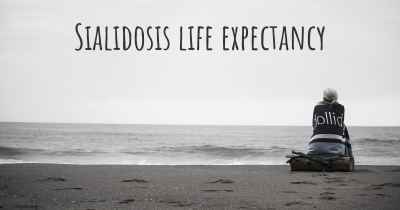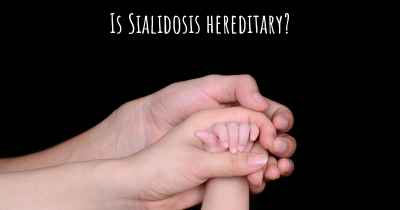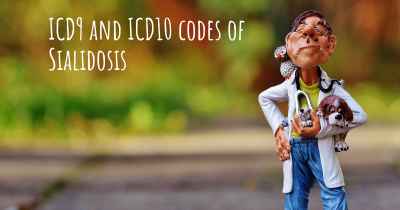What is the history of Sialidosis?
When was Sialidosis discovered? What is the story of this discovery? Was it coincidence or not?

Sialidosis is a rare genetic disorder that affects the metabolism of sialic acid, a sugar molecule found in the body. It is characterized by the deficiency of an enzyme called neuraminidase, which is responsible for breaking down sialic acid. This leads to the accumulation of sialic acid in various tissues and organs, causing a wide range of symptoms.
The history of Sialidosis dates back to the early 1960s when it was first described by Dr. William L. Nyhan, an American pediatrician. Dr. Nyhan observed a group of patients with similar symptoms, including developmental delay, skeletal abnormalities, and enlarged liver and spleen. He named this condition "Sialidosis" based on the accumulation of sialic acid in the tissues.
Further research in the following years revealed that Sialidosis is caused by mutations in the NEU1 gene, which provides instructions for producing the neuraminidase enzyme. These mutations result in a dysfunctional or absent enzyme, leading to the accumulation of sialic acid.
Sialidosis is classified into two types:
1. Type I: Also known as the milder form, it typically presents in late childhood or adolescence. Symptoms may include developmental delay, ataxia (lack of muscle coordination), cherry-red spots in the eyes, skeletal abnormalities, and hepatosplenomegaly (enlarged liver and spleen).
2. Type II: This is the more severe form of Sialidosis and usually presents in infancy or early childhood. In addition to the symptoms seen in Type I, individuals with Type II may experience coarse facial features, intellectual disability, seizures, and progressive neurologic deterioration.
Over the years, advancements in genetic testing and molecular techniques have allowed for a better understanding of Sialidosis. Researchers have identified numerous mutations in the NEU1 gene associated with the disorder, which has facilitated genetic counseling and prenatal diagnosis for affected families.
Although Sialidosis is a rare disorder, its impact on affected individuals and their families can be significant. The symptoms and progression of the disease can vary widely, making it challenging to diagnose and manage. Treatment options for Sialidosis are currently limited, and management primarily focuses on alleviating symptoms and providing supportive care.
Research efforts are ongoing to develop potential therapies for Sialidosis. One approach being explored is enzyme replacement therapy, which involves providing the missing or dysfunctional neuraminidase enzyme to affected individuals. This approach has shown promise in other lysosomal storage disorders and may offer hope for Sialidosis patients in the future.
In conclusion, Sialidosis is a rare genetic disorder characterized by the deficiency of the neuraminidase enzyme, leading to the accumulation of sialic acid in various tissues. It was first described in the 1960s by Dr. William L. Nyhan. The disorder is classified into two types, with Type II being more severe. Genetic advancements have improved diagnosis and counseling for affected families, although treatment options remain limited. Ongoing research aims to develop potential therapies for Sialidosis, offering hope for improved management and outcomes for affected individuals.
Posted Aug 11, 2017 by Trajano 5900








